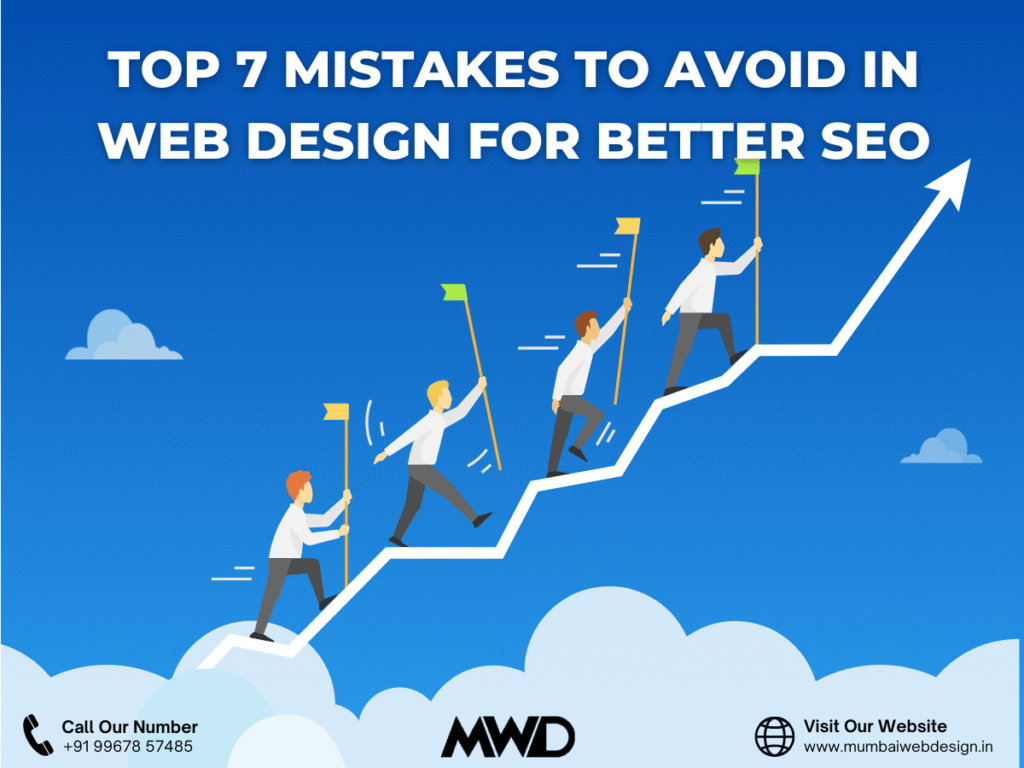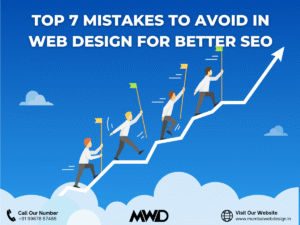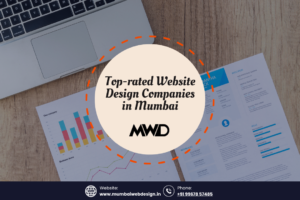Your website is not just a digital booklet; it is the tool, which propels your online marketing engine. But, oftentimes, the most reputed and visually stunning sites can poorly perform if they do not go by the SEO principles. In 2025, you cannot design a website without following SEO guidelines. A poor quality design not just drives the users away from your site but also acts as a negative ranking signal to search engines like Google. Following are the seven web design mistakes you cannot ignore. Also, find out how not to make those oversights.
Absence of mobile first approach
Today, more than 60% of views come from mobile devices. So, you can no longer cling to desktop based website designs. Google’s mobile first index policy states that your ranking will depend on how well you have developed the mobile version of your site.
Common mistakes:
- Minimum clickable areas
- Very slow loading time
- Horizontal viewports
How to fix it: Apply responsive frameworks, check usability in different devices and focus on mobile user experience. You can also try mobile friendly test tools or software like BrowserStack to evaluate the performance.
Disorganized layout
Navigation has always been the foundation of intuitive user engagement. If your viewers do not get what they are searching for quickly, they will leave-when bounce rates crosses a threshold, Google notices and lower your rank.
Impact on SEO: Confusing navigation gives rise to bounce rate, which decreases crawlability.
How to fix it:
- Use a hierarchical structure
- Top level elements should be no more than 7
- Include breadcrumb and navigation bar
Proper navigation strengthens usability and assists crawler to comprehend the site structure in a better way.
Slow loading speed
Speed is a vital ranking factor and something that 99% users want when they visit a site. So, even a delay of fraction of seconds can decrease conversion rate by 7%.
Main reasons:
- Big sized images
- Excessive CSS and Javascript codes
- Low quality hosting
How to fix it:
- Reduce the image size using tools like TinyPNG
- Minimize JS and CSS
- Implement catching and CDN
- Check page speed insights frequently
Fast loading sites create strong first impression by increasing engagement rate and SEO score.
Inaccurate CTA placement
A CTA encourages users to take specific conversion actions. But if you place them in a way that they remain invisible, viewers will totally ignore them.
SEO connection: CTAs affect engagement parameters like site spending time and conversions tremendously.
How to fix it:
- Always place the CTAs in the primary viewport section and in critical areas of the page
- Use contrasting layouts and colors with action oriented words
- Ensure mobile optimization
Proper CTAs drive business actions and give indirect support to SEO.
Uncompressed images
Use of high resolutions images always involves the risk of site slow down if not optimized properly.
How to fix it:
- Decrease image size without ruining the quality
- Always use new file formats such as WebP
- Add alt tag that describes the image properly
- Use lazy loading features
With optimized images, you are able to improve speed and accessibility substantially.
Excessive use of pop-ups
Pop-ups are great features but if you use it irresponsibly or time it inaccurately, they can severely damage the UX and can also lead to Google penalties.
What can go wrong:
- Instant pop-up generation
- Interruptive interstitials
- Hard to close dialogue boxes
How to fix it:
- Make pop-ups appear after 70% of page scroll
- Activate exit intent overlays
- Make them mobile friendly
You must trigger pop-ups strategically so that the SEO and user trust are not undermined.
Cluttered texts and unreadable fonts
If your users have hard time to read your content, they won’t hesitate to leave-and same goes for the search engine bots.
Major issues:
- Use of fonts smaller than 16px
- Very little contrasts
- Highly decorative font
How to fix it:
- Always use fonts of 16px or bigger
- Select fonts which are readable and support web format
- Keep contrasting fonts
- Divide the content into small paragraphs
When you have highly readable content, your website dwell time increases dramatically, this in turn gives the much-needed SEO boost to your site.
Conclusion
Web Design does not revolve around aesthetics; it is also about clarity, optimization and user experience. Each decision on designs should meet user as well as search engine requirements. You must be watchful of the seven aforementioned mistakes if you want to have a site that is not just captivating but also designed for visibility, lasting impression and conversion.
Key Takeaways
- Focus on Mobile based layouts and elements
- Use simple, easily navigable design
- Ensure speed optimization for every page
- Put CTAs in strategic positions
- Compress images and use alt texts
- Use pop-up boxes in key positions
- Utilize clear fonts to ensure readability
When you combine design with SEO, you succeed in building a website that acts as your growth engine. Audit the website on a daily basis, repair or remove broken links and build an unforgettable digital experience for your viewers.
Frequently Asked Questions
ANS: As per Google’s new indexing guidelines, your mobile site is the standard for ranking. If the crawlers find the mobile version of your site of substandard quality, you are likely to have lower ranking, regardless of the quality and UX of your desktop site.
ANS: You must target below 3 seconds. A faster site will help elevate your user experience and lower the leaving rate, influencing the ranking effectively.
ANS: Yes, especially if they are messy and appear out of nowhere. You must place them sparingly and make sure they do not cover the main contents.
ANS: Alt text is responsible for increasing accessibility and aiding the search engines to evaluate your image content properly, which in turn enhances image visibility.
ANS: It largely depends on your page’s intent. But, the ideal number is two to three. Your CTAs should be user friendly and direct them to correct locations.
ANS: The ideal size is 16px for body text. You must combine it with eye-soothing fonts to make your content legible in all devices.





